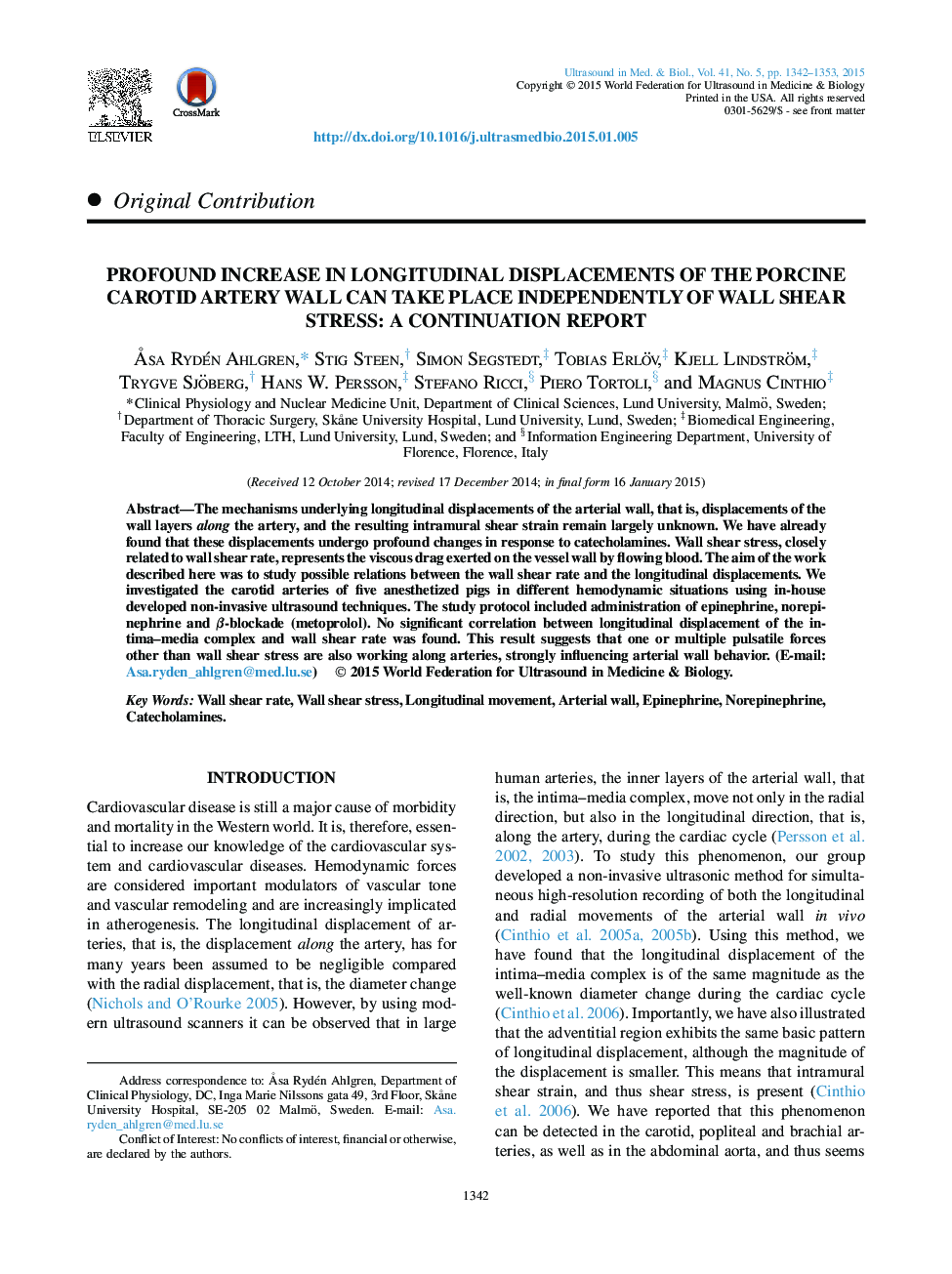| Article ID | Journal | Published Year | Pages | File Type |
|---|---|---|---|---|
| 10691445 | Ultrasound in Medicine & Biology | 2015 | 12 Pages |
Abstract
The mechanisms underlying longitudinal displacements of the arterial wall, that is, displacements of the wall layers along the artery, and the resulting intramural shear strain remain largely unknown. We have already found that these displacements undergo profound changes in response to catecholamines. Wall shear stress, closely related to wall shear rate, represents the viscous drag exerted on the vessel wall by flowing blood. The aim of the work described here was to study possible relations between the wall shear rate and the longitudinal displacements. We investigated the carotid arteries of five anesthetized pigs in different hemodynamic situations using in-house developed non-invasive ultrasound techniques. The study protocol included administration of epinephrine, norepinephrine and β-blockade (metoprolol). No significant correlation between longitudinal displacement of the intima-media complex and wall shear rate was found. This result suggests that one or multiple pulsatile forces other than wall shear stress are also working along arteries, strongly influencing arterial wall behavior.
Keywords
Related Topics
Physical Sciences and Engineering
Physics and Astronomy
Acoustics and Ultrasonics
Authors
Ã
sa Rydén Ahlgren, Stig Steen, Simon Segstedt, Tobias Erlöv, Kjell Lindström, Trygve Sjöberg, Hans W. Persson, Stefano Ricci, Piero Tortoli, Magnus Cinthio,
